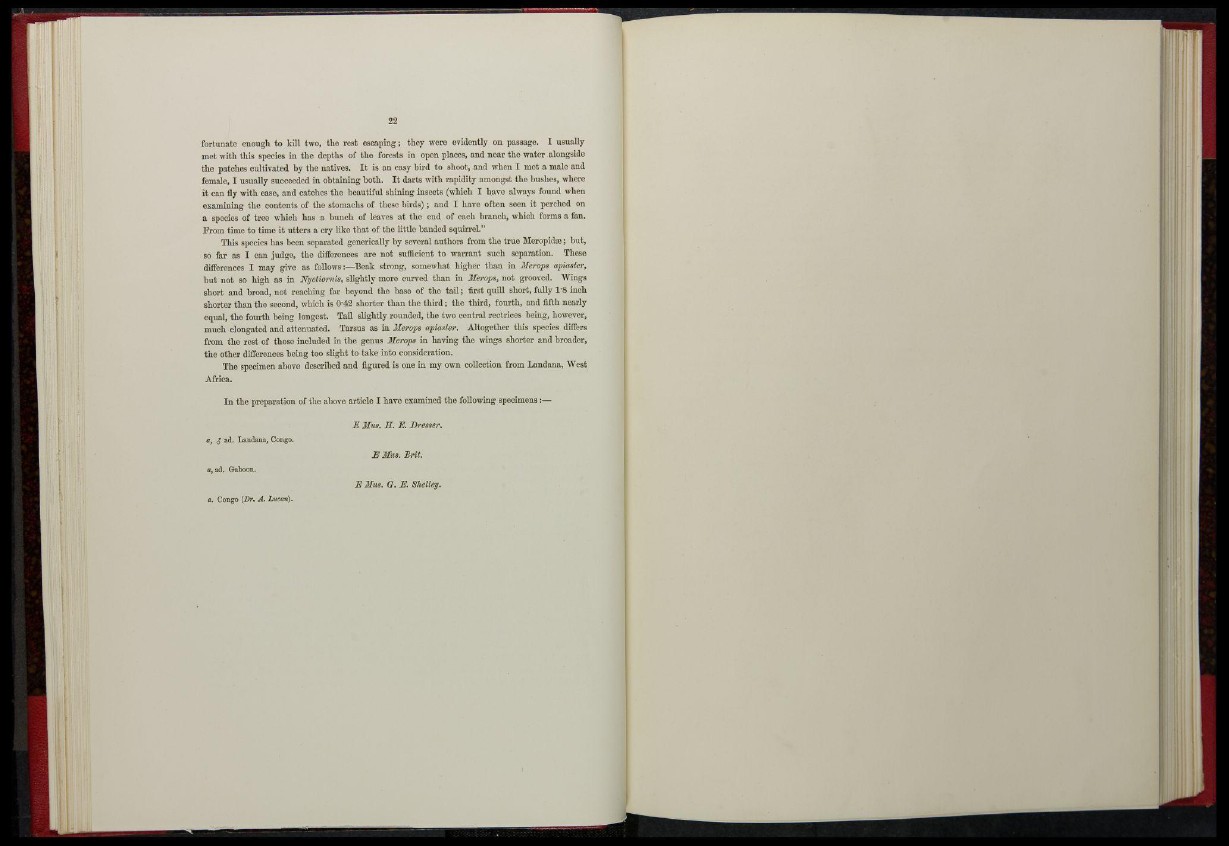
fortunate enough to kill two, the rest escaping; they were evidently on passage. I usually
met with this species in the depths of the forests in open places, and near the water alongside
the patches cultivated by the natives. It is an easy bird to shoot, and when I met a male and
female, I usually succeeded in obtaining both. It darts with rapidity amongst the hushes, where
it can fly with ease, and catches the beautiful shining insects (which I have always found when
examining the contents of the stomachs of these birds) ; and I have often seen it perched on
a species of tree which has a bunch of leaves at the end of each branch, which forms a fan.
From time to time it utters a cry like that of the little banded squirrel."
This species has been separated gencrically by several authors from the true Merophke; but,
so far as I can judge, the differences are not sufficient to warrant such separation. These
differences I may give as follows:—"Beak strong, somewhat higher than in Merops apiasier,
but not so high as in Nyctiornis, slightly more curved than in Merops, not grooved. Wings
short and broad, not reaching far beyond the base of the t a i l ; first quill short, fully 1*8 inch
shorter than the second, which is 0'42 shorter than the third; the third, fourth, and fifth nearly
equal, the fourth being longest. Tail slightly rounded, the two central rectriees being, however,
much elongated and attenuated. Tarsus as in Merops ((piaster. Altogether this species differs
from the rest of those included in the genus Merops in having the wings shorter and broader,
t h e other differences being too slight to take into consideration.
The specimen above described and figured is one in my own collection from Landana, West
Africa.
I n the preparation of the above article I have examined the following specimens :—
E Mus. H. E. Dresser.
a, J ad. Landana, Congo.
E Mus. Brit.
a, ad. Gaboon.
E Mus. G. E. Shelley.
a. Congo (Dr. A. Lucan).